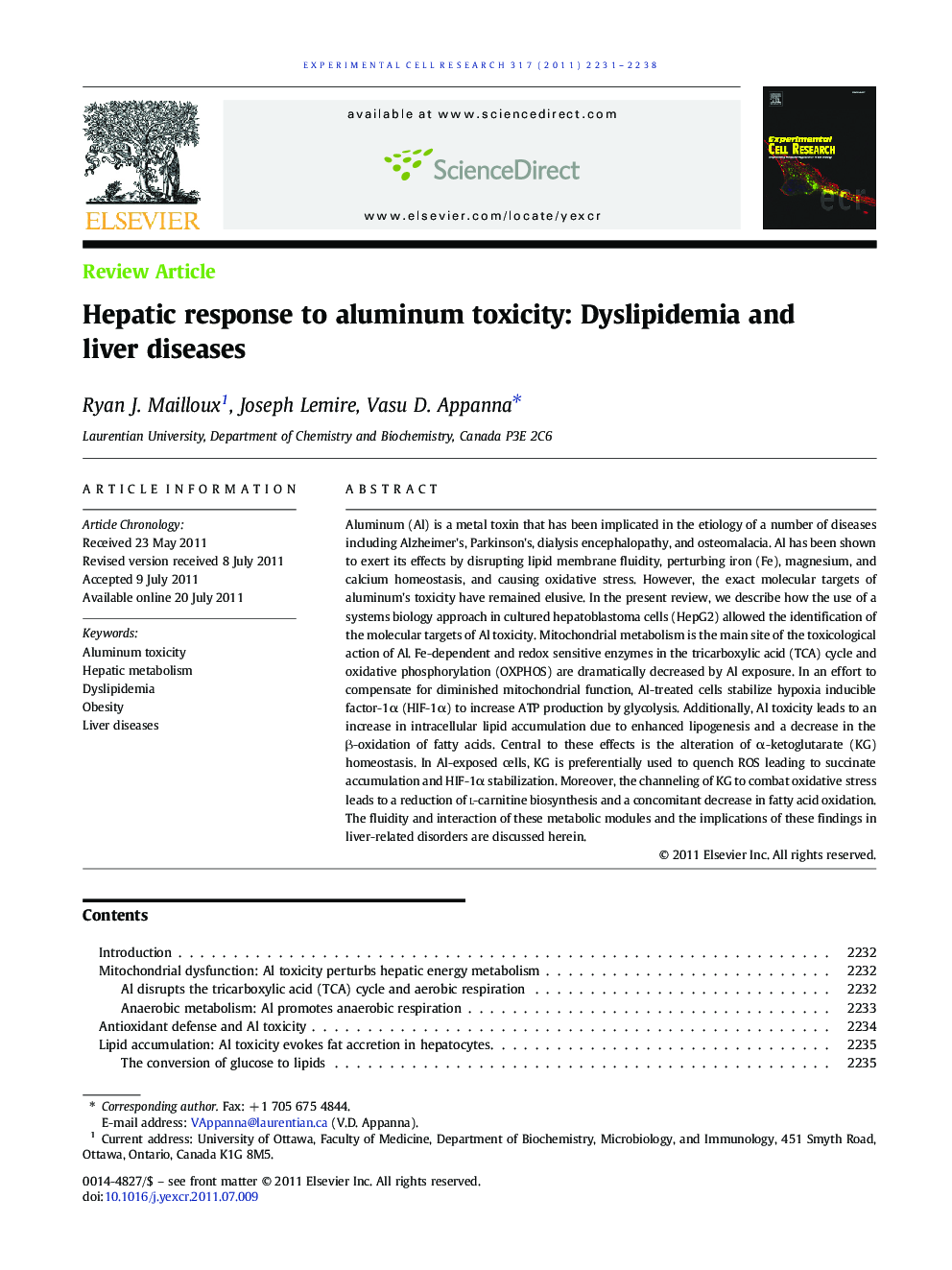| Article ID | Journal | Published Year | Pages | File Type |
|---|---|---|---|---|
| 2131025 | Experimental Cell Research | 2011 | 8 Pages |
Aluminum (Al) is a metal toxin that has been implicated in the etiology of a number of diseases including Alzheimer's, Parkinson's, dialysis encephalopathy, and osteomalacia. Al has been shown to exert its effects by disrupting lipid membrane fluidity, perturbing iron (Fe), magnesium, and calcium homeostasis, and causing oxidative stress. However, the exact molecular targets of aluminum's toxicity have remained elusive. In the present review, we describe how the use of a systems biology approach in cultured hepatoblastoma cells (HepG2) allowed the identification of the molecular targets of Al toxicity. Mitochondrial metabolism is the main site of the toxicological action of Al. Fe-dependent and redox sensitive enzymes in the tricarboxylic acid (TCA) cycle and oxidative phosphorylation (OXPHOS) are dramatically decreased by Al exposure. In an effort to compensate for diminished mitochondrial function, Al-treated cells stabilize hypoxia inducible factor-1α (HIF-1α) to increase ATP production by glycolysis. Additionally, Al toxicity leads to an increase in intracellular lipid accumulation due to enhanced lipogenesis and a decrease in the β-oxidation of fatty acids. Central to these effects is the alteration of α-ketoglutarate (KG) homeostasis. In Al-exposed cells, KG is preferentially used to quench ROS leading to succinate accumulation and HIF-1α stabilization. Moreover, the channeling of KG to combat oxidative stress leads to a reduction of l-carnitine biosynthesis and a concomitant decrease in fatty acid oxidation. The fluidity and interaction of these metabolic modules and the implications of these findings in liver-related disorders are discussed herein.
